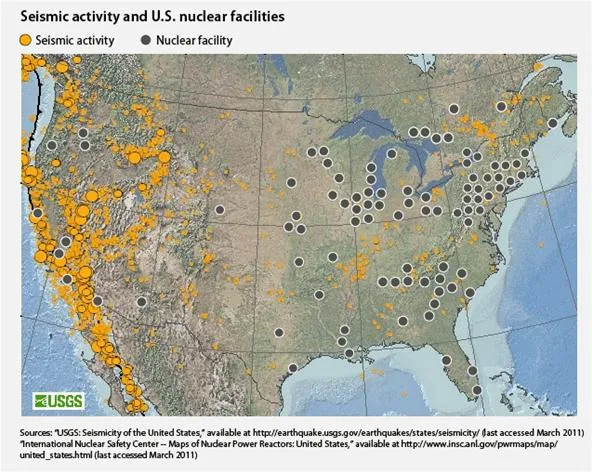After getting slammed with a crazy-big earthquake/tsunami, the Japanese nuclear plant Fukushima Daiichi might be on the brink of meltdown. Not as bad as Chernobyl, but maybe as bad as Three Mile Island. Nobody wishes such a disaster on anyone...anywhere in the world. In the US, there are about 100 nuclear facilities, about 8 of which are located near hot beds of seismic activity.
Yes, we've been educated on how to lessen the effects of such a tragedy, but the best case scenario is to stop it from happening in the first place. Below, six points for preventing a nuclear meltdown in the United States.

- Identify potentially susceptible reactors: in coastal and seismically active areas—anywhere that can flood, anywhere that might feel a big tremor. San Onofre and Diablo Canyon in southern California both rest on fault lines and are close to the beach and so should be doubly red-flagged.
- Check the coolant. The biggest problems occur when the radioactive material gets too hot, leaks out of it's steel container, and reacts with the surrounding concrete. To keep the place cold, each power plant should have backup generators upon backup generators (some run by batteries in case electricity is cut off). Fukushima has 2 backup generators, but the one that runs on batteries can't seem to keep up with the amount of heat coming from the nuclear material.
- Maintain proper tsunami and earthquake warning systems. Some politicians want to cut funding for NOAA, the agency responsible for tsunami monitoring and warning. Don't let them. Also, support the USGS who does the same for hard-to-predict earthquakes.
- Support scientific research on how to improve the safety of nuclear reactors. Most power plants today have a heavily shielded container for the nuclear material and a control-rod-mechanism which prevents explosive energy from accumulating during a disaster. Thus, we don't have to worry about another Chernobyl. We're not at zero risk, either, though. And, safe nuclear energy could be very useful in an age of dwindling fossil fuels.
- It's already pretty tough to get a permit for a new reactor, make it tougher to get a permit for one near seismic activity or flood plains.
- Protect the taxpayers. If nuclear meltdown did occur, it's almost too expensive for the companies themselves to clean up. Thus, the cost falls on the American taxpayers, ironically, the ones who would suffer the most. Right now, the DOE charges the nuclear power plant for this risk through the nuclear loan guarantee program. Make reactors near faults and flood plains pay more.
SOURCE CNN VIA Science Progress






















Comments
Be the first, drop a comment!